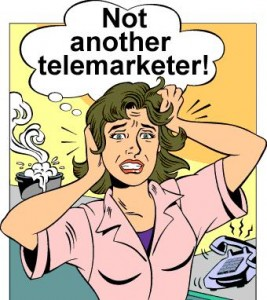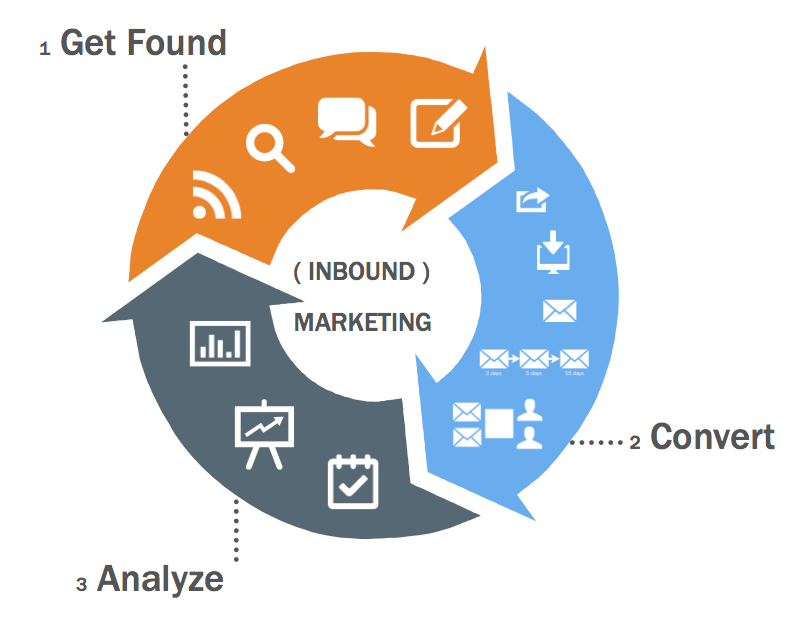With the rise of the internet, Google (the king of the internet), and popularity of social networks, the marketing playing field is rapidly evolving. Companies that are still slow to accept and adapt their marketing strategies will inevitably fall behind if they haven’t already.
Traditional marketing, also known as outbound marketing, includes tactics such as:
- Brochures/Flyers
- Yellow Page Ads
- Radio
- Cold Calling
- Direct Mail
- Door Knockers
- Coupons
- Telemarketing
- TV Spots
While these tactics still hold value, they are becoming a lesser percentage of the overall marketing mix and it is important to make sure they are providing a solid ROI. For example, an abundance direct mail- especially if it offers little to no value, is often deemed as junk and tossed by gatekeepers, cold calling and telemarketing only bothers people, and when is the last time you honestly used a yellow book?
As buying behavior changes, so too must your marketing strategy. Consumers have access to more resources than they’ve ever had. In fact, 60% of the research and decision making is done prior to you knowing that a prospect is even in the market for your goods or service. Furthermore, your company or business is now being judged digitally. It is not enough to have a website, you need to have a website that is visually pleasing, professional, optimized and responsive.
Inbound marketing allows you to connect with your ideal customers. It provides you with a way to interact with businesses and consumers during the research and decision making process in order to capture the attention of your most coveted prospects along their “buyers journey.” Creating content that specifically addresses the interests, needs and desires of your ideal customer attracts qualified leads to your door, nurtures them, turns them into customers and then keeps them coming back for more.
Here are some Inbound tactics to help your business generate leads:
- Blogging – The facts: 92% of companies that blog multiple times per day acquired a customer through their blog, B2B companies that blog generate 67% more leads per month than those who do not blog, blogs give websites 434% more indexed pages and 97% more indexed links. Your blog allows you to create content that speaks directly to your ideal customer’s interests and needs.
- Premium Content – This includes eBooks, whitepapers, Slideshares, infographics, videos, podcasts and webinars. Use this quality information to educate, inform and guide customers along their “buyers journey.”
- Website Design – Your site has approximately 10 seconds to capture visitor’s attention before they hit the back button. Visually stimulating, clean, clear, easy to navigate, responsive, personable and engaging content, images and design will help you attract and capture qualified leads.
- Pages – Going along with having a stellar website, make sure you optimize your web pages to appeal to the ideal buyer. Make your site is the source of helpful and educational content to entice the right people to visit.
- Keywords – These are incredibly important to your website being found in the first place. While Google will penalize you for keyword stuffing, setting up an Ads campaign to determine which words your ideal customer is searching for can help you attract more qualified leads. Use these keywords to create content that addresses the needs of your customers.
- Video – Think of this as a visual representation of your blog. Videos should be captivating, informative and relatively short. You want to pique their interest, answer some questions and then tell them where they can learn more.
- Social Media Engagement – Social media gives you the opportunity to humanize your brand. Interact with your prospects in the places they hang out online. Some of the ways you can cultivate a following on social media are to share relevant articles, retweet thought leaders, promote a positive and cohesive brand experience and develop brand ambassadors.
- Email Campaigns – Emails don’t have to be SPAM. The goal here is to stay in front of your prospects. Don’t expect immediate results either, that is not the goal. Instead, you want to provide regular, informative updates and relevant content to keep your prospects thinking about you. Sending out just two emails a month can help shorten the sales process by building trust and fostering a relationship early on.
If you are still wary, take a look around! How many people do you see on their smartphones and tablets daily? Right your ideal client has a problem that your business can address, but if you aren’t optimized to show up in the right place, at the right time – or a competitor has already been developing that relationship – then they will find other companies that can.
Inbound marketing strategies require a detailed, targeted persona and a deep understanding of your targeted pains in order to create a successful plan that will address and solve each of those pains. An inbound marketing budget for B2B company should contain some if not all of the following line items:
- Content development
- Email Programs
- E-Newsletters
- Graphic Artists
- Market Research
- Marketing Software
- Metrics and Data Analysis
- Mobile Marketing
- PPC
- PR Specialists
- SEO/Keyword Research
- Social Media Specialists
- Web Development and Re-Engineering
- Special Events
For help creating and executing a successful integrated marketing strategy, please contact Sagefrog Marketing Group.



